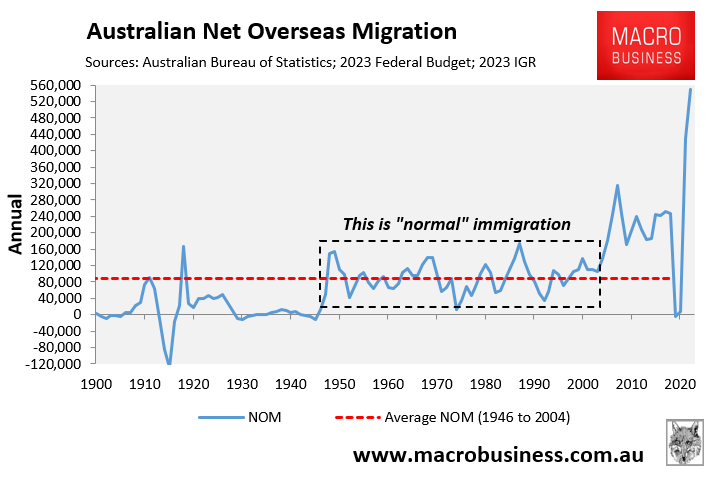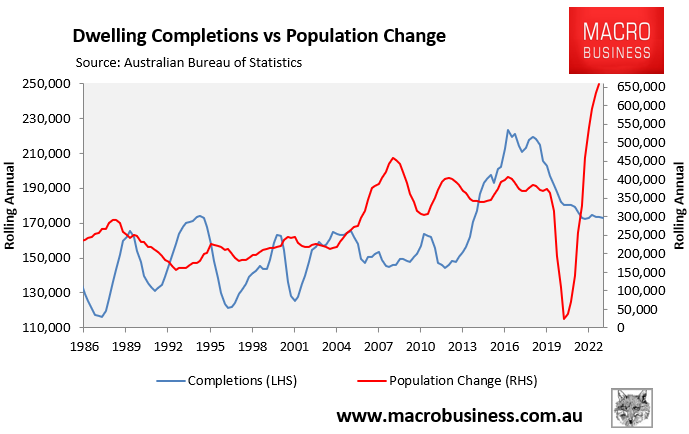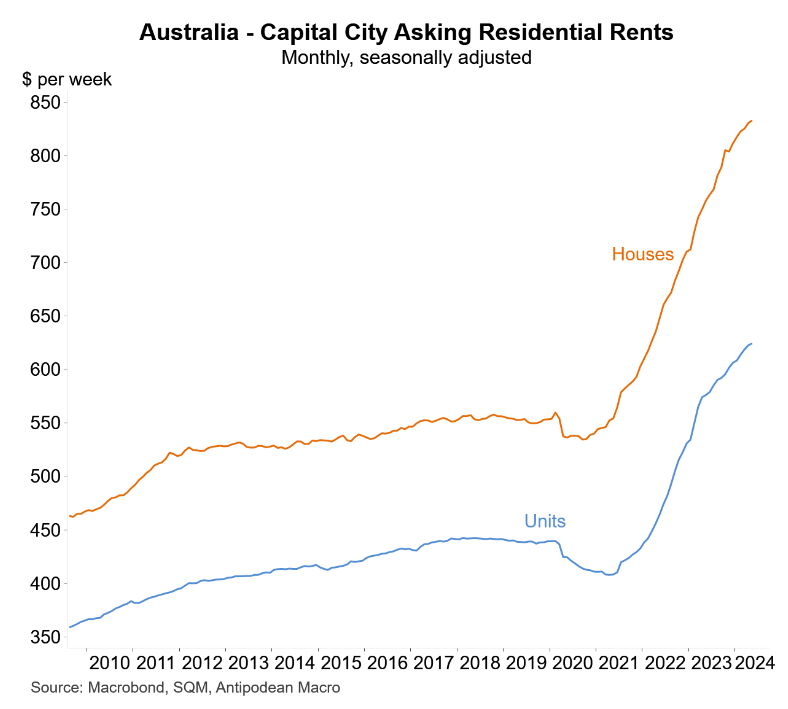If you want proof that the Albanese government never bothered to consider the impact on housing when it decided to ramp up immigration to record levels, watch the below Senate Economics Committee video from last week:
In the video, Liberal Senator Andrew Bragg asks the Minister for Finance, Katy Gallagher, what current migration levels are, which she first fumbles and then gets rude, arrogant, and bitchy.
Andrew Bragg then asks what modelling the government has done on changes to migration and their impact on housing. To which, Labor and Treasury admit that housing isn’t considered part of migration policy outside broad budget figures on “dwelling investment”.
Treasury Official:
Once the government sets the migration settings and the population settings in the budget, we incorporate those into our macroeconomic forecast at an aggregate level. So, the overall level of GDP, participation, and productivity in the economy.
I’m not aware of specific modelling that has been done on the direct impact on the housing market. But my colleagues and Centre for Population may be able to add further detail there.
Andrew Bragg:
So, are you saying that you haven’t done the modelling on the migration and housing impact?
Treasury Official:
Not specifically through the housing market. We’ve looked at how, when migration numbers move in the budget, we change the aggregate level of GDP to reflect that in our budget projections.
But in terms of a specific modelling exercise, looking at the impact of different scenarios of migration through the housing market, I’m not familiar with that myself.
Andrew Bragg:
I would just say that it would be strange to the typical person that there would be something as material to housing as the number of people who are coming into the country, and you haven’t modelled the impact of that migration policy on housing.
Treasury Official:
We haven’t done a specific modelling exercise in terms of the overall modelling that you do on housing.
Andrew Bragg:
It’s peculiar to me that you haven’t modelled that particular link between migration and housing. Obviously, overall, it’s quite a depressing picture, isn’t it about housing construction?
Treasury Official:
We’ve been very clear in the budget that we think there is a need across all levels of government… to increase the flexibility and speed of supply response in the housing market. And there are some obvious constraints that have held that back in the near-term.
Andrew Bragg:
You’ve got to commission the right modelling so you know what you’re doing. Otherwise, you’re flying blind.
The above exchange highlights, yet again, how delinquent the Albanese government has been on housing.
Australia is experiencing its worst ever rental crisis because the federal government deliberately chose to ramp-up immigration to record levels without considering where those migrants would live or the state of the building industry.

As a result, a record gulf has arisen between housing supply and demand:

And rental inflation has surged into the stratosphere:

It was pure policy malfeasance from Labor that has driven tenants into acute financial stress and forced thousands of Australians to live in group housing or to become homeless.

